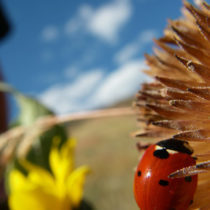Landscape Architecture for Landscape Architects › Forums › GENERAL DISCUSSION › Model making
- This topic has 1 reply, 9 voices, and was last updated 12 years, 7 months ago by
 Wyatt Thompson, PLA.
Wyatt Thompson, PLA.
-
AuthorPosts
-
December 13, 2011 at 5:32 pm #158958
Ryan Mills
ParticipantOne of my assignments for my landscape architecture degree has asked for a presentation model of the site we are designing. In needs to have no/minimal colour and show plant massing, textures and forms. I was wondering if anyone knows what would be the best materials and methods to use? would scrunched up tissue paper work? or is there any better suggestions?
December 13, 2011 at 8:03 pm #158968 Wyatt Thompson, PLAParticipant
Wyatt Thompson, PLAParticipantOh how I miss the days of building models. I doubt there is a truly “best” method, as the materials you use will depend largely on the look you want and the time/tools you have access to. Trees and plant massings could be made from wire, pipe cleaners, baby’s breath, styrofoam, cotton balls, painted twigs or foliage, foam core shavings, shredded paper…. The ground plane and site features could be from foam core, matt board, chip board, cardboard, wood, popsicle sticks, styrofoam, paper mache, clay…. Each material presents its own advantages and disadvantages in terms of workability, finish, and character.
Did your professors show you any examples? Go to a craft store and walk down the aisles for inspiration. Take a walk around campus or in a park and look for “found” elements that you could use. Think about how the materials could be used in unique ways to represent the most critical element(s) of the object you are modeling. Think about how the different materials work together, contrast with one another, or blend together. Think about how you’ll attach one element to the next. These are all things you’ll need to consider as a professional when designing/working with actual construction materials. And have fun too!
December 13, 2011 at 9:46 pm #158967 Lana MerrillParticipant
Lana MerrillParticipantI agree with Wyatt as far as materials. If you’re going to a white monochrome scheme, mat board, white tissue paper, cardstock/printer paper, and baby’s breath is a good combo. If you’re going for a light brown/cardboard look, chip board (don’t get it too thick or you’ll struggle cutting it), inner side of cardboard for texture (you could cut it into super thin strips and play with it if it looks too heavy/bulky), and then dried sedum (usually is around most campuses) for trees.
Makes me want to build a model! And don’t forget matte finish mod podge 🙂 🙂 newspaper is also fun for water or big open space (just don’t put too much of it on the model, it coud turn into a tacky 3rd grader model real quick!) and HAVE FUN with it!!
December 13, 2011 at 9:47 pm #158966 Lana MerrillParticipant
Lana MerrillParticipantBy the way – I would stay away from foam core – it can be SO hard to make it look clean and precise. Plus, it also tends to look heavy. If you do choose it, go for the thinnest size you can get.
December 13, 2011 at 10:05 pm #158965 Wyatt Thompson, PLAParticipant
Wyatt Thompson, PLAParticipantThe key to foam core (and most card/mat boards actually) is a sharp blade. I’ve known people to replace the blade after 3 or 4 long foam core cuts. That may be extreme, but it might also be worth it to keep the edges looking nice. Lana is right: it looks like crap if you use a dull blade. I wouldn’t totally give up on it as a material though. The variety of thicknesses can make it pretty versatile, and stripping off the top layer of paper and leaving the foam exposed makes for an interesting textural difference.
December 14, 2011 at 2:01 am #158964April Prey
ParticipantOne of my favorite models I worked on used wire for trees. Comes in many colors so you can stick with your neutral color scheme. Damn, I’d take a photo of one if I could find one…but they are somewhat abstract and can be quick to make.
Do you have access to a laser cutter? Once I used a laser cutter, I vowed to never cut chipboard manually again. Saves your sanity for sure.
December 14, 2011 at 12:27 pm #158963 Trace OneParticipant
Trace OneParticipantWhat about plastilene? I like the look of contour lines done in some kind of hardboard (cardboard, etc.) but it is also nice to cover the whole thing with plastilene, and go for some detail textures in the ‘clay”. colors, also..
Once I used rocks and sand for a japanese garden design – collected from a park..the limit is your imagination, for what materials to use.
December 14, 2011 at 6:34 pm #158962 Nikolaos MillerParticipant
Nikolaos MillerParticipantDitto what other people have suggested for modeling terrain. For vegetation, take a walk around campus and see what kind of dried vegetation is around (fuzzy grass seed heads, yarrow, juniper, etc). Arts & crafts stores are great places to hit up as well for wood, dried vegetation, chip board, foam core, just walk around and think about the scale, form and textures that you want to represent. Most of all, have fun, use your imagination, try different textures, colors and see what works for you!
December 14, 2011 at 7:33 pm #158961 Tosh KParticipant
Tosh KParticipantchipboard (butterboard is easier to cut, but doesn’t photograph as nicely until it ages), picture wire for trees (unravel to get branching, other wires can work too but I like the twirl of picture wire and relative plasticity- it holds its form) and wire mesh to match for shrubs/groundcover. Peeling/sanding/uniform scoring to add textures as necessary. Get a nice straight edge (I like the raised edge on a Alumi-cutter with a slip-proof backing), and replace blades often (when it stops cutting cleanly easily replace, doesn’t matter if its olfa or exacto – the hardened steel blades do last longer -special exacto blades-). if you hold the blade right, you can get a beveled edge.
hopefully the photos upload (chipboard base with picture wire trees, mesh wire and basswood; second has piano wire, scrap spanish cedar and plexi.)
December 15, 2011 at 10:27 pm #158960 Ellis CuckseyParticipant
Ellis CuckseyParticipantOur school’s workshop had a special saw for cutting foam core. It was similar to a jig saw but the blade was a small-diameter file that sort of buffed out the imperfections as it cut. Pretty cool tool.
December 16, 2011 at 6:29 pm #158959Anonymous
InactiveI agree, I loved making models through school. Here is a sample of my trees. I used a silver thick gauge wire for the crowns and wrapped it around the trunk. It was kind of a pain and required a good amount of squeezing to get the crowns to stay stuck to the trunk but in the end it worked out. The green wire simulated the crown and filled out the trees creating mass.
I think with models the creator needs to figure out their scale and then adjust the amount of detail shown based on that. An 1/8″ scale would show crown and everything while a 40 scale model might only show the trunk.
Good luck!
-
AuthorPosts
- You must be logged in to reply to this topic.

